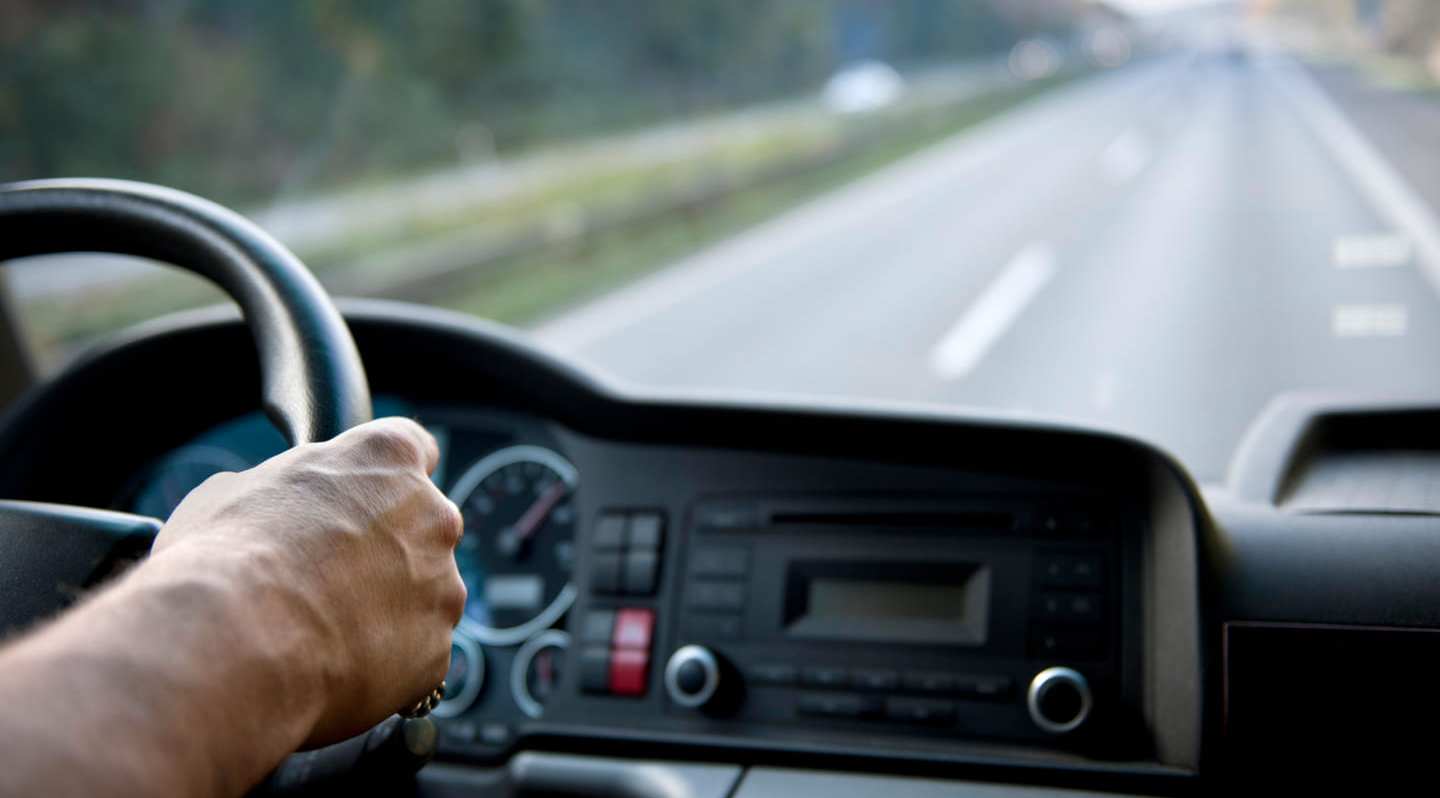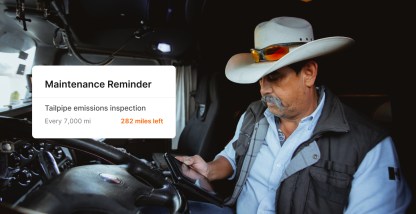Texas has two different sets of rules for moving freight. Interstate and intrastate. To help break it all down, Motive interviewed Tom Hartman. He’s a 30-year veteran of the Texas Department of Public Safety (DPS). Tom spent 20 years in the Commercial Vehicle Enforcement Division of the Texas DPS. And he has conducted CDL training programs in nearly every state.
Interstate vs intrastate: does it matter where your freight is going?
One source of confusion is interstate vs intrastate. Tom says it depends on the movement of the load. Not your route.
You already know that crossing state lines is interstate movement. You can also have interstate movement, even if you never haul your load out of Texas.
One common way this happens is on loads picked up at ports. Let’s say you pick up a load at the port of Houston and deliver it to a distribution center somewhere else in Houston. If that freight originated anywhere outside Texas, you’re carrying interstate freight. Even if you only drive it across town.
The most important thing to remember: the load determines which rules apply. Not the route. Not the operator. Not the customer. If your freight crossed state lines, you are an interstate motor carrier. Texas rules can be applied when your freight originates in Texas and stays within the state.
As the operator, you’re responsible for knowing which rules apply. And this kicks in when you’re dispatched.
States that border Texas
If you are dispatched from Texas to Louisiana, that is interstate movement.
But on the way back to Texas, you have options. You can stay on the interstate rules. Or you can do a 34-hour restart to a cycle and convert back to Texas intrastate rules. You just need to make this decision before you are dispatched with the next load. You can’t wait until you cross state lines to figure out what rules to use.
Tom says that some people mistakenly believe that if one truck in the fleet operates under interstate rules, all of the trucks in the fleet must do the same. But this is incorrect. Part of a fleet can be on interstate rules. And part can be on Texas intrastate rules.
Federal and state laws. Which ones matter more?
It’s helpful to think of state and federal laws as in the same bucket. State law officers don’t enforce federal laws. And federal agencies don’t oversee intrastate carriers. State and federal government entities work in similar ways to enforce the rules that apply to carriers. Many federal rules are also state laws. And state agencies perform safety audits much as their federal counterparts do.
Levels of inspection
The Commercial Vehicle Safety Alliance (CVSA) sets guidelines and criteria for inspector certification. A roadside inspection has different levels:
- Level 1. Checks for HOS, driver’s license, medical certification, DL, bill of lading, inspection of the vehicle, driver certification (e.g., hazmat).
- Level 2. Same as level 1, but with a walk-around inspection. They don’t inspect underneath the vehicle.
- Level 3. Checks driver HOS and driver qualifications.
A level 1 or level 2 inspection cannot be done on the side of the road. If something on the vehicle needs to be inspected, the truck will be escorted to a location where the inspection can safely take place. The decision to inspect is at the officer’s discretion. And the weather can impact the decision.
The Inspection Selection System (ISS) score is based on any deficiencies discovered in previous inspections. All of the data is derived from roadside inspections. When you are pulled over or inspected, your DOT number tells the inspector whether previous issues should be checked and what those issues are.
Inspection personnel look at the driver, hours of service, the vehicle, and any hazmat freight when deciding whether to issue a violation or put you out of service.
Driver and fleet manager preparation
Drivers need to understand which rules apply to their loads so they can stay in compliance. That’s just as true for Texas intrastate drivers who never leave Texas as it is for interstate drivers who regularly cross the country. Drivers should be doing pre- and post-trip inspections, recording the results, and repairing any deficiencies they find. Drivers should be able to reproduce their logs and know how to operate the ELD.
Fleet managers can help drivers prepare by offering training and refresher courses. He recommends tailoring this to the needs of your fleet. Whether it’s monthly or quarterly, make sure driver training is ongoing. Successful fleets have their own internal schedule for safety audits and vehicle inspections. Being proactive helps the entire fleet stay on the road.
The rules for exemptions in Texas
Texas adopted the ELD mandate into its code in 2017. The Texas DPS wrote an exception to the Hours of Service (HOS) rule. If you have an AOBRD in place, it could be grandfathered in until December 2019.
There are three exceptions to the ELD mandate in Texas:
- Short haul within a 150-air-mile radius. To get this exception, you have to return to your work location within 12 hours. You also have to keep accurate documentation showing start, end, and total hours. This does not exempt you from the 80-hour intrastate cycle rule at any point in time. Concrete-ready mix, concrete pump, and asphalt carriers are allowed 14 hours instead of 12.
- Drive-away tow away
- Engines manufactured prior to 2000
Operate the device correctly
Tom says one area of confusion he’s seen is ELDs being run in the AOBRD mode. It makes a huge difference in the logs that are produced if you do this. For example, ELD adjustments have to be certified by the driver, but AOBRD adjustments do not.
Drivers should be able to produce the logs correctly. State trucking and police agencies have information on their websites to help you learn what logs are required.
The Motive fleet management solution
In addition to helping you modernize your fleet and stay ahead of the competition, Motive regularly teams up with safety experts like Tom Hartman to guide you through confusing mandates and compliance rules. Questions about compliance? Email us at compliance@gomotive.com.









